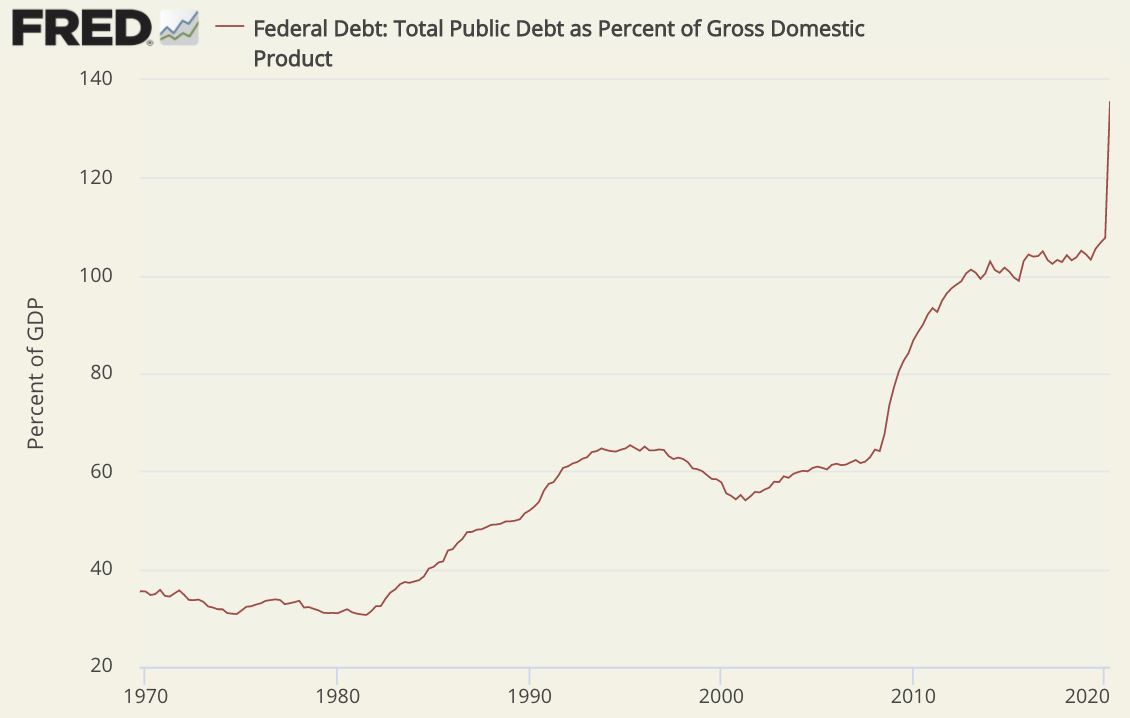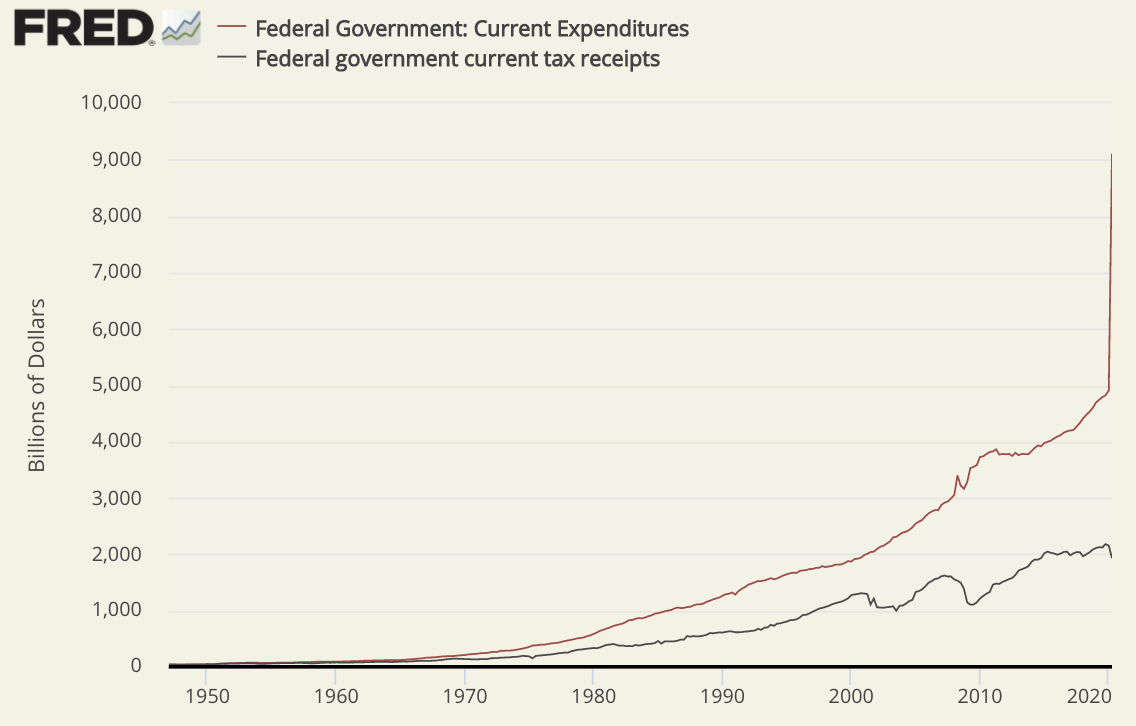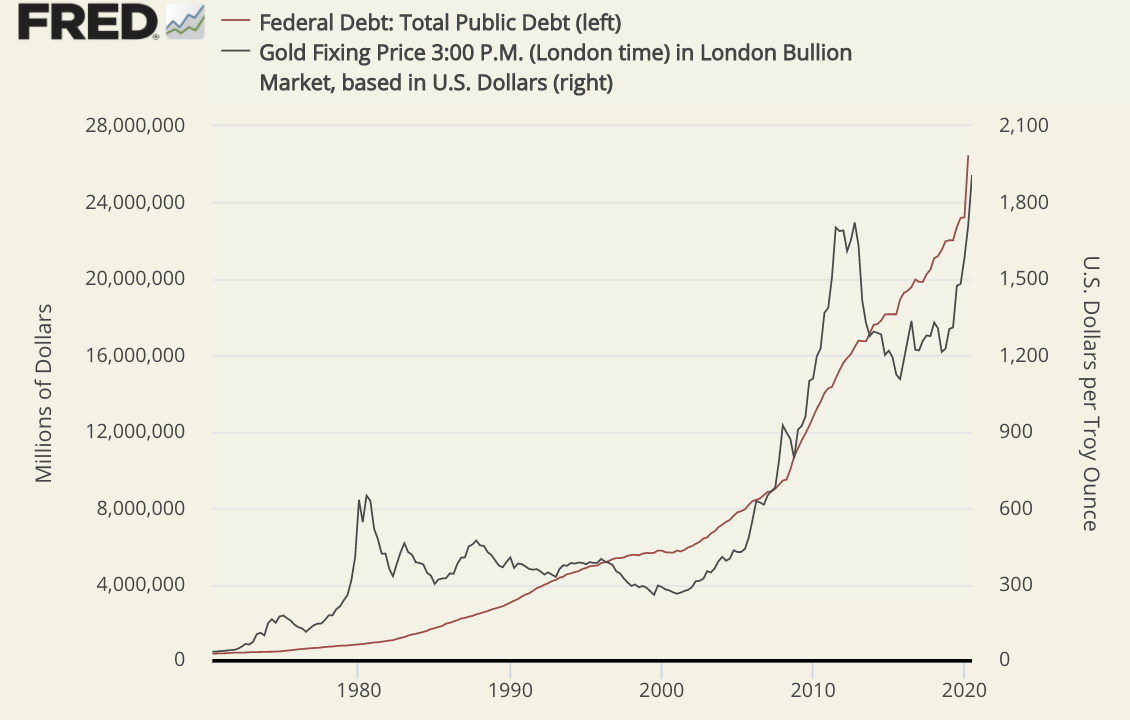NEWS &VIEWS
Forecasts, Commentary & Analysis on the Economy and Precious Metals
Celebrating our 47th year in the gold business
NOVEMBER 2020
“The United States can pay any debt it has because we can always print money.” – Alan Greenspan
Stimulus, Debt and Gold
‘Stay in the stock market but build hedges’
Few at the corner of Wall Street and Main would quarrel with the extraordinary steps the central bank and federal government have taken given the current circumstances. At the same time, any new rescue effort will pile trillions of debt on the trillions already committed to combating the ill-effects of the coronavirus. As the World Bank’s Carmen Reinhart, best known for her study with Kenneth Rogoff on financial crises, put it: “While the disease is raging, what else are you going to do? First, you worry about fighting the war, then you figure out a way to pay for it.” A good many have taken precautions to counter the possibility of financial collateral damage from that war.
“The world reels from the economic aftershocks of the coronavirus pandemic,” reads a recent Financial Times article, “but for Swiss bankers shepherding the fortune’s of the world’s super-rich it is boom time.” Their standard advice has been to stay in the stock market but build hedges. “One hedge in particular,” it says, “was pushed by many Swiss bankers and wealth advisers to their clients with great success this year — gold. … Buying it was the corollary to the huge governmental stimuli that buoyed equity markets.” Investment gold demand, we will add, is now running at record levels. The first four charts bring you up to speed on the extraordinary, pandemic-driven surge in the U.S. national debt. The fifth shows the all-important link between the national debt and the price of gold.
|
U.S. Total Public (Federal) Debt 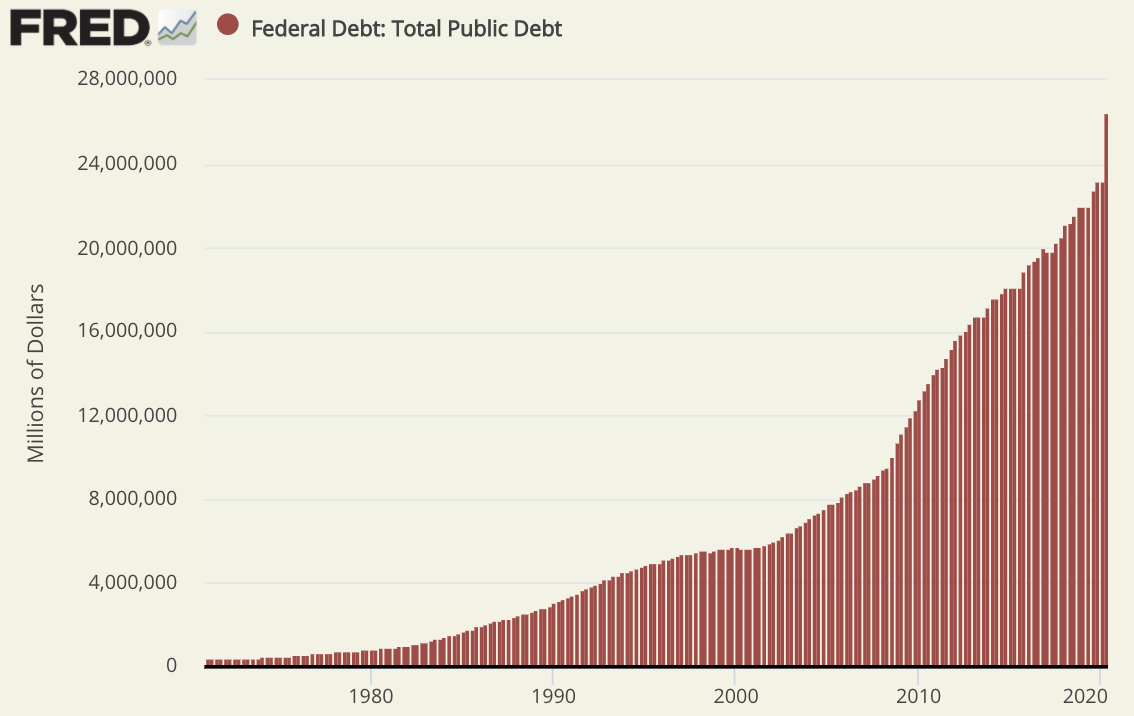
Sources: St. Louis Federal Reserve [FRED], U.S. Department of the Treasury Fiscal Service |
|
Additions to the U.S. Federal Debt 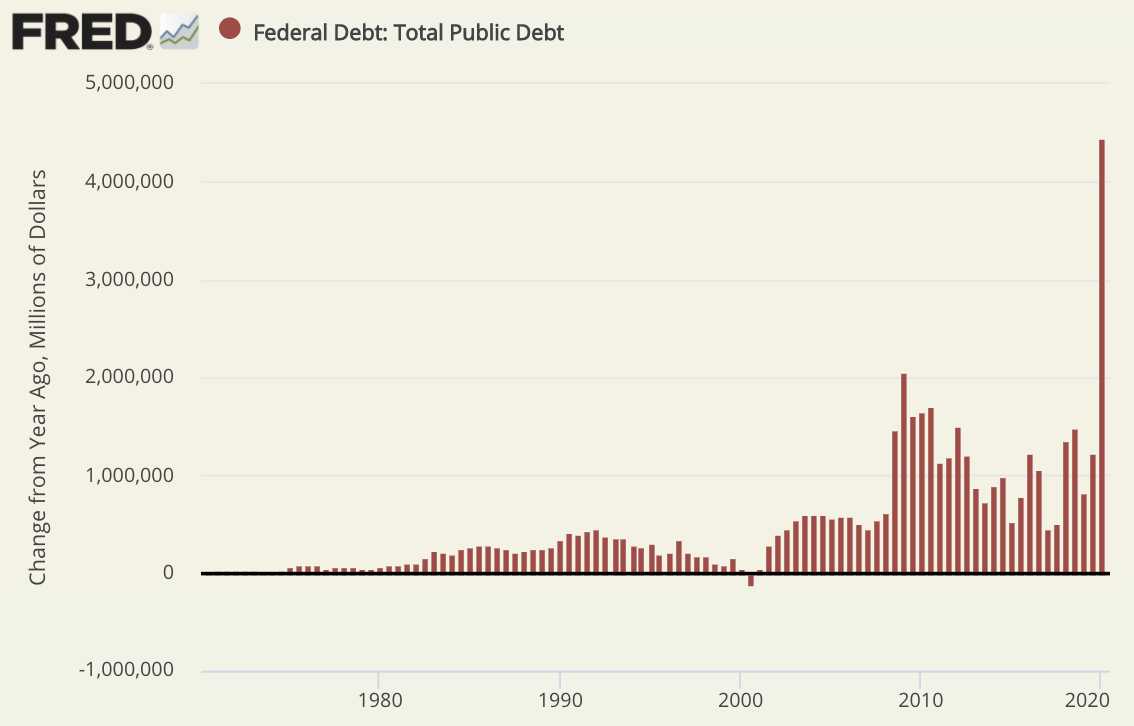
Sources: St. Louis Federal Reserve [FRED], U.S. Department of the Treasury Fiscal Service |
|
U.S. Federal Debt as a Percent of Gross Domestic Product |
|
U.S. Government Current Expenditures and Receipts |
|
Gold and the U.S. National Debt |
The ghost of John Maynard Keynes has a busy October

The ghost of John Maynard Keynes (seated far right at a recent Federal Reserve Board of Governors meeting) had a busy October extending his influence far and wide as the world sank ever deeper into the economic abyss opened by the coronavirus pandemic. Keynes, as many of you already know, played a central role in formulating policy for both Great Britain and the United States during the 1930s Great Depression – the last time the world economy faced a seemingly insurmountable economic crisis. Keynes, who died almost 75 years ago, advocated ramped-up government spending and deficits as a means to pulling the economy out of the 1930s depression. So it is not surprising that Chairman Jerome Powell and the Federal Reserve would summon his ghost during the current travails by calling for an aggressive federal government fiscal rescue package.
The irony in this turn of events is that the Fed has been extolling the virtues of restrained deficit spending, a stable (if not strong) currency, and low inflation since the 1980s. All of that, it seems, is out the window – at least for now. Regrettably, as things stand at the moment, the only real way to “pay for the war” (returning to Carmen Reinhart’s formula as stated in the prior section) is the time-honored one – by running massive deficits and financing them, since there is no viable alternative, by running the money printing press at full tilt. The Committee for a Responsible Federal Budget, you might be interested to learn, recently reported that “the Federal Reserve indirectly purchased nearly all new debt issued since the recent crisis began.”
So what does all of this have to do with the price of gold in international markets?
Bridgewater Associate’s Ray Dalio probably captured it best in a recent Linked-In analysis titled The Changing Value of Money. “Printing and devaluing money is the easiest way out of a debt crisis,” he writes. “While people tend to think that a currency is pretty much a permanent thing and believe that ‘cash’ is the safe asset to hold, that’s not true because all currencies devalue or die and when they do cash and bonds (which are promises to receive currency) are devalued or wiped out. That is because printing a lot of currency and devaluing debt is the most expedient way of reducing or wiping out debt burdens.” From there Dalio, who presides over the world’s largest hedge fund, tells us that “Of the roughly 750 currencies that have existed since 1700, only about 20% remain, and of those that remain all have been devalued.” … “Gold,” he concludes, “has been the timeless and universal alternative currency.” Those of you who are regulars to this commentary will recall that Dalio has been an advocate of gold ownership for a good many years. It is a position that has treated him well.
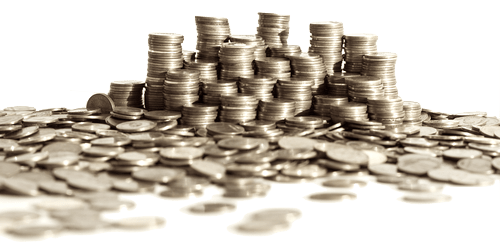
‘Silver could explode within weeks’ – Jim Rickards
“The upcoming election and its aftermath,” writes analyst Jim Rickards at the Daily Reckoning website, “could witness social unrest that would make this summer’s chaos look downright tame. We might not even know the winners for several weeks after the election. Things could get very ugly. If that happens, shortages will appear and the price of silver could soar to $60 per ounce or higher from current levels of about $25 per ounce.” Ricards sees silver as “the once and future money” – recapturing its historic role, like gold, as a form of money with “just as good a pedigree.”
Silver sales at USAGOLD have been consistently strong all year. A large proportion of that demand, as Ricards points out, has to do with a perception that it is an undervalued alternative to gold as a store of value. After all gold just recently went to an all-time high while silver at under $25 per ounce is still trading at roughly half its all-time high achieved in 2011. Ricards says “sales of silver coins and bullion are set to skyrocket.”
Sales of the U.S. Mint’s popular silver American Eagle one-ounce coins reflect that growing interest. Through October 2020, the Mint has sold 24,533,500 silver Eagles. That compares with 14,863,500 ounces respectively for all of 2019 – a 165% increase. Some investors take delivery of their silver orders. Others – particularly those taking a larger position – open depository storage accounts. If you see the current price lull as an opportunity, we can help you confirm your order quickly over the telephone (1-800-869-5115 x100) or through our Online Order Desk.

Chart courtesy of GoldChartsRUs
Gold is the only way out for central banks
“Gold is the only way out for central banks,” writes gold researcher Jan Nieuwenhuijs (The Gold Observer) CBs want inflation? They need a higher gold price. CBs want to repair their balance sheets? They need a higher gold price. CBs want to reset the system with an immutable, neutral, and evenly distributed reserve asset? That’s gold.” There is significant reportage on gold being purchased by central banks, but it really is not the major players in the official sector who are doing the buying but the smaller players – led by Turkey and Russia. There has been considerable speculation that China has been a major buyer with Nieuwenthuijs among the researchers advancing the theory. It will be a profoundly different story for the gold market, however, if major central banks begin adding gold to their coffers as a policy maneuver to hedge their overall balance sheets. Competition for available supplies would intensify. The price would likely make a hefty response.
The U.S. is facing a dollar collapse by the end of 2021 – Stephen Roach
Back in June, Yale economist Stephen Roach predicted that “the dollar is going to fall very, very sharply” – tp the tune of 35% drop against other major currencies. He bases that forecast on the massive budget deficits and growth in the national debt outlined and charted in the lead section of this month’s edition. Roach doubled down on that forecast in early October in a follow-up CNBC interview. “The ‘seemingly crazed idea,’ he added, “that the U.S. dollar will collapse against other major currencies in the post-pandemic global economy is not so crazy anymore.” Since the March peak, the dollar has declined by about 10% as measured by the US dollar index. At the beginning of the Covid-19 inspired economic crisis, gold and the dollar rose in tandem as capital went in search of safe havens. Since early summer, though, the two have diverged (Please see chart below) as the Federal Reserve’s massive stimulus took the steam out of the dollar’s rise and investor interest transferred it to gold. A 35% decline from the peak would take the index to its lowest value on record – a crash that would echo loudly in the gold market.
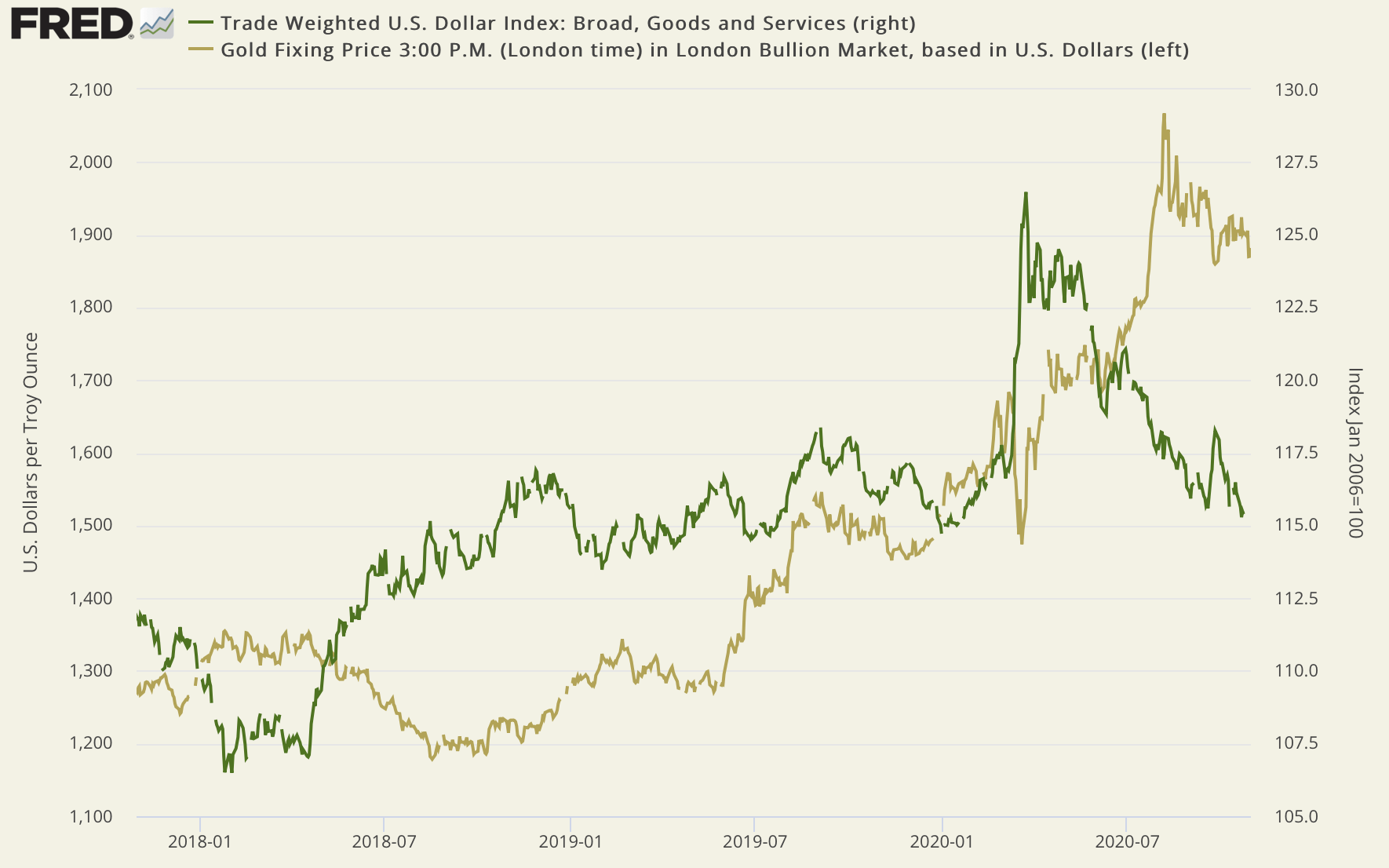
Sources: St. Louis Federal Reserve [FRED], Federal Reserve Board of Governors, ICE Benchmark Administration
Final Thought
2021 marks a dubious milestone – the fiat money system’s golden anniversary

“If you look out the window, you’ll see printing presses everywhere. You know what happened to all the other countries in history that have gotten themselves deep into debt… it hasn’t been pretty.” – Jim Rogers, recent Peak Prosperity Interview
The Everyman edition of Edward Gibbon’s History of the Decline and Fall of the Roman Empire comprises some six volumes and nearly 4000 pages. Rome was not built in a day and, as Gibbon’s work reveals, it was not lost in a day. What we are challenged to recognize with respect to U.S. monetary policy today is not an event, but a process. The decline of the dollar since the United States went off the gold standard in 1971 has not come in a handful of sudden, cataclysmic events like formal devaluations, but gradually and consistently, over a period of five decades. That process is likely to continue.
Gold has had long periods where it gained in value during those five decades, periods when it lost value, and periods when the price was stagnant. The over-riding trend, though, has been to the upside. In fact, the long-term linkage between the rising U.S. national debt and a rising gold price is one of the most enduring features of the contemporary fiat money economy president Richard Nixon launched in 1971, as shown in the chart in the first section. A system he launched by the way with the famous statement: “We are all Keynesians now.”
In 2021, we will come to a dubious milestone – the fiat money system’s golden anniversary. Pandemic aside, the continuing inability of the U.S. federal government to come to grips with its fiscal problems during those fifty years largely explains the enduring, some would say stubborn, presence of gold in millions of investment portfolios around the world – including now those of central banks, financial institutions and hedge, pension and sovereign wealth funds. Until such time as fiscal rectitude takes hold in the halls of Congress – an unlikely proposition any time soon – present gold owners are likely to hold tight and new owners are likely to continue joining their ranks. In the end, contemporary gold owners, by and large, do not own gold to become wealthy, but to protect the wealth they already have.
________________________________________
Image courtesy of Wikimedia Commons. The decline in the Roman Antoninianus’ pure silver content from 240-280 AD paralleled the beginning stages of the empire’s decline. The coin was introduced in 215 AD with a 50% silver content and was gradually debased in steps to a copper coin plated with silver by 270 AD.
Up-to-the-minute gold market news, opinion, and analysis as it happens.
If you appreciate NEWS & VIEWS, you might also take
an interest in our Daily Top Gold News and Opinion page.
Ready to add a safe haven to your holdings?
ORDER DESK: 1-800-869-5115 x100/orderdesk@usagold.com
ONLINE ORDER DESK-24/7

Disclaimer – Opinions expressed on the USAGOLD.com website do not constitute an offer to buy or sell, or the solicitation of an offer to buy or sell any precious metals product, nor should they be viewed in any way as investment advice or advice to buy, sell or hold. USAGOLD, Inc. recommends the purchase of physical precious metals for asset preservation purposes, not speculation. Utilization of these opinions for speculative purposes is neither suggested nor advised. Commentary is strictly for educational purposes, and as such USAGOLD does not warrant or guarantee the accuracy, timeliness, or completeness of the information found here. The views and opinions expressed at USAGOLD are those of the authors and do not necessarily reflect the official policy or position of USAGOLD. Any content provided by our bloggers or authors is solely their opinion and is not intended to malign any religion, ethnic group, club, organization, company, individual, or anyone or anything.
 Michael J. Kosares is the founder of USAGOLD, author of The ABCs of Gold Investing – How To Protect and Build Your Wealth With Gold [Three Editions], and the firm’s publications editor.
Michael J. Kosares is the founder of USAGOLD, author of The ABCs of Gold Investing – How To Protect and Build Your Wealth With Gold [Three Editions], and the firm’s publications editor.


